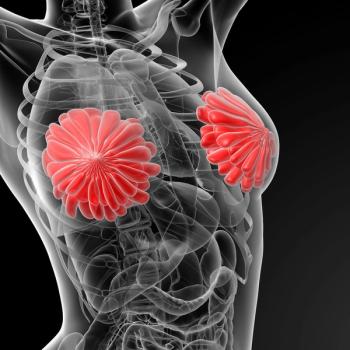
Adjuvant Capecitabine Improves Survival in Residual Invasive Breast Cancer
Patients with HER2-negative breast cancer with residual invasive disease following neoadjuvant chemotherapy benefit from adjuvant treatment with capecitabine.
Patients with HER2-negative breast cancer with residual invasive disease following neoadjuvant chemotherapy benefit from adjuvant treatment with capecitabine, according to results of a new randomized study.
“Patients who have residual invasive breast cancer after the receipt of neoadjuvant chemotherapy have a high risk of relapse,” wrote study authors led by Norikazu Masuda, MD, PhD, of Osaka National Hospital in Japan. Appropriate treatment in these patients was previously unclear; capecitabine has been shown to be effective in metastatic breast cancer patients, and is used as a second-line therapy when patients are resistant to anthracycline therapy, taxane therapy, or both.
The new CREATE-X study randomized 910 patients with HER2-negative residual invasive breast cancer who had been treated with neoadjuvant anthracycline and/or taxane chemotherapy to either post-surgical capecitabine or no such therapy (455 patients in each group). Results of the study were
A prespecified interim analysis showed that the study had met its primary endpoint and was thus terminated early, after a median follow-up of 3.6 years. At 3 years, 82.8% of capecitabine patients were alive and free from recurrence or second cancer, compared with 73.9% of control patients. At 5 years, these rates were 74.1% and 67.6%. The hazard ratio (HR) for recurrence, second cancer, or death was 0.70 (95% CI, 0.53–0.92; P = .01).
For overall survival (OS), the 3-year rate was 94.0% with capecitabine and 88.9% without; at 5 years, these rates were 89.2% and 83.6%. The HR for OS was 0.59 (95% CI, 0.39–0.90; P = .01).
Specifically among patients with triple-negative disease, the disease-free survival rate was 69.8% in capecitabine patients and 56.1% in control patients; the HR for recurrence, second cancer, or death in these patients was 0.58 (95% CI, 0.39–0.87). The OS rate was 78.8% vs 70.3%, respectively, and the HR for death was 0.52 (95% CI, 0.30–0.90). The differences were not significant in patients with hormone receptor–positive disease.
The therapy was generally well tolerated. The most frequent adverse event in the capecitabine group was hand-foot syndrome, occurring in 73.4% of patients; 11.1% had a grade 3 event. Most adverse events were grade 1 or 2 in severity; serious events deemed related to capecitabine were observed in 4 patients, and included neutropenia, diarrhea, epigastric pain, and abdominal pain.
“Capecitabine showed effectiveness as an adjuvant option in patients with HER2-negative breast cancer who had residual invasive disease after standard neoadjuvant chemotherapy,” the authors concluded.
Newsletter
Stay up to date on recent advances in the multidisciplinary approach to cancer.

















































































